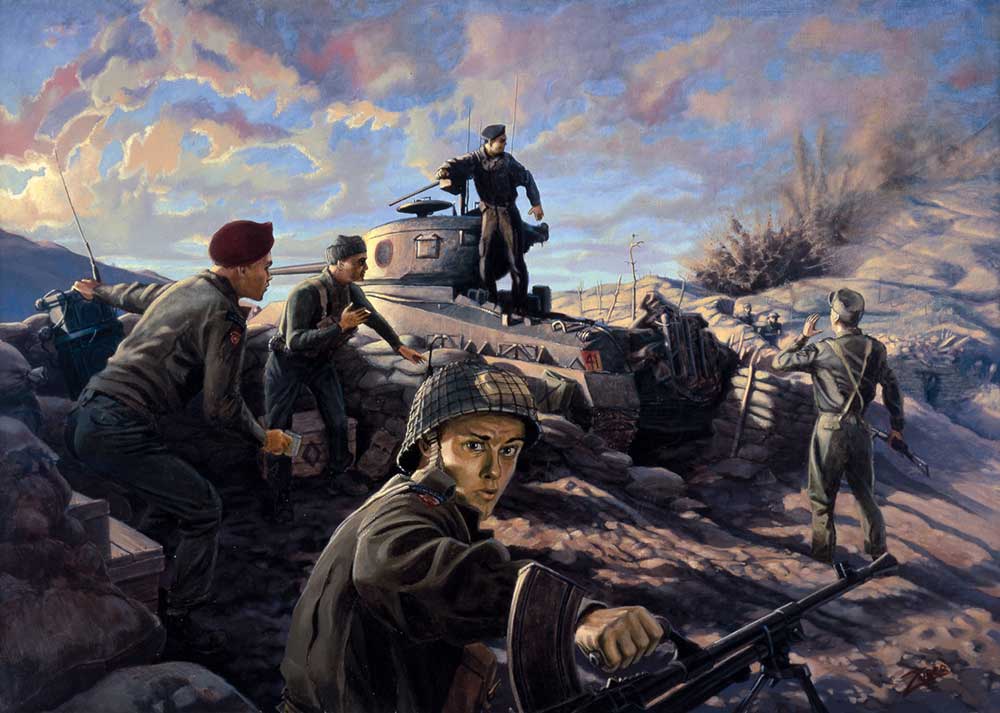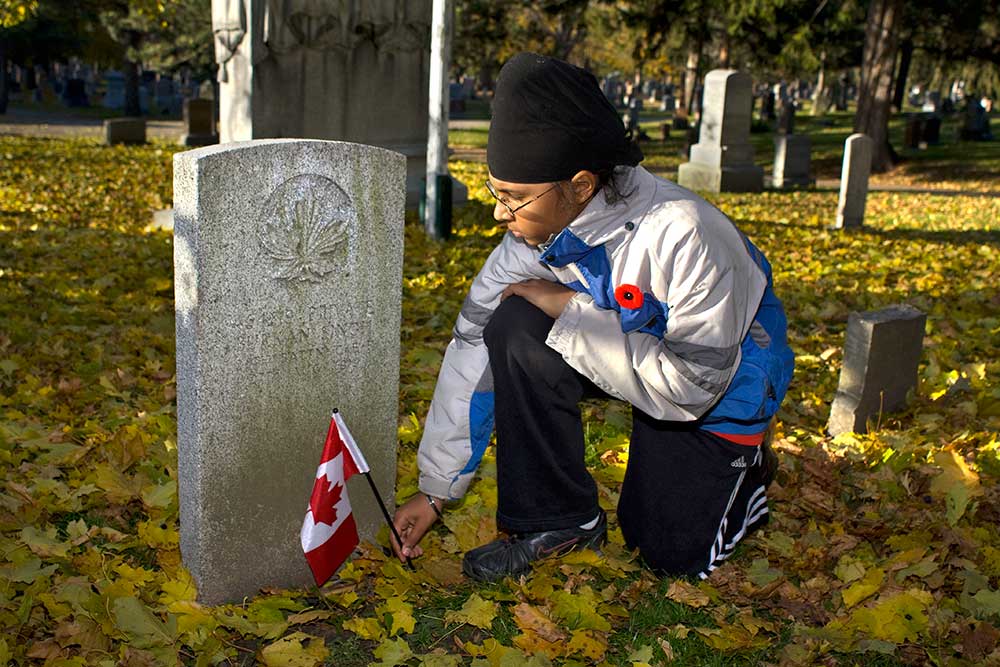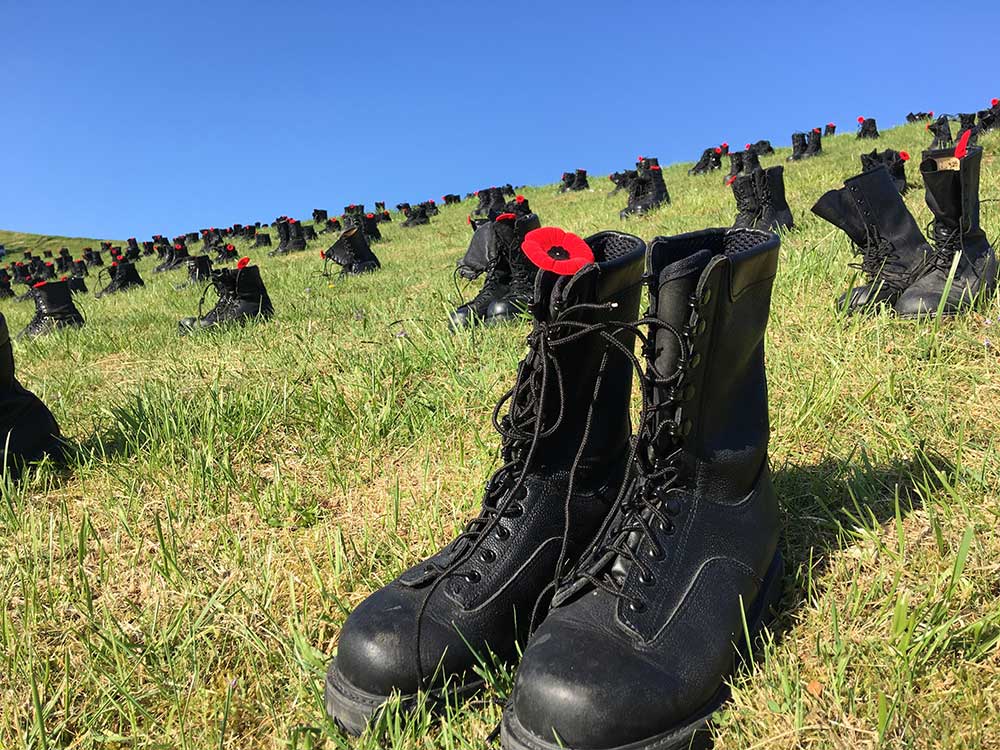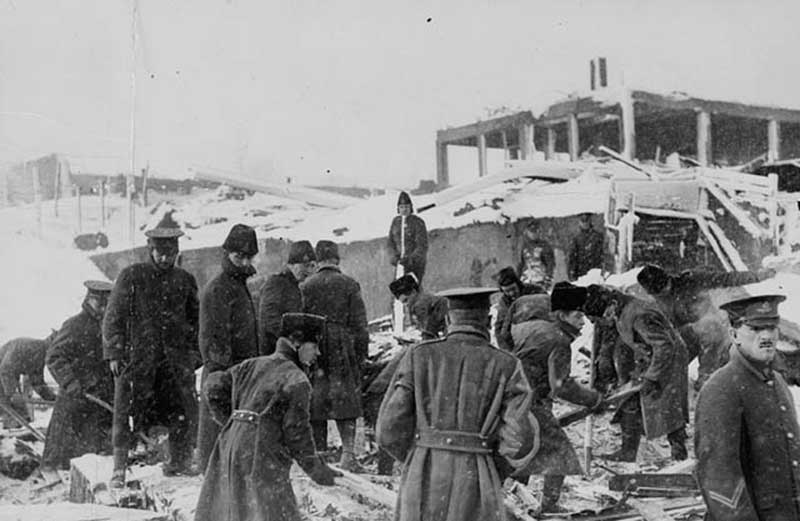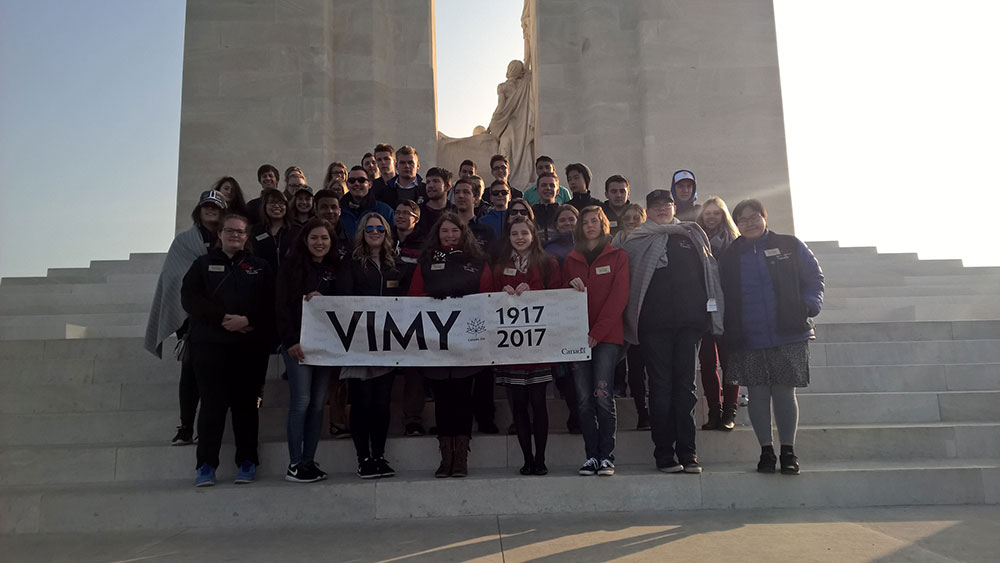Canada Remembers Times - 2017 Edition - Page 3
Holding Hill 355
The painting “Incoming” by Edward Zuber depicting Canadian action at Hill 355 in October 1952.
Photo: © Canadian War Museum CWM 19890328-008
More than 26,000 Canadians served in the Korean War which raged in the Far East from 1950 to 1953. One of the front line sectors where our soldiers would see the most action was around Hill 355, located about 40 kilometres north of the city of Seoul.
After experiencing heavy action in the area earlier in the war, Canadian soldiers would again find themselves in the midst of hard fighting there in the fall of 1952. The Royal Canadian Regiment came under attack by Chinese forces in the early evening of October 23. The enemy put down a heavy artillery barrage, then charged our positions.
Under heavy assault and with communications cut off, some of the Canadians had to fall back. However, United Nations troops poured tank and mortar fire onto the attacking Chinese soldiers, which forced them to withdraw. The enemy driven back, the Canadians succeeded in reoccupying the position in the early hours of October 24. Sadly the fighting had taken a heavy toll—18 Canadians were killed, 35 wounded and 14 more taken prisoner.
Sikh-Canadian soldiers in the Great War
A young person visiting the grave of Private Bukan Singh.
Photo courtesy of Sandeep Singh Brar www.SikhMuseum.com
At least ten Sikh-Canadians served in the First World War. One of these brave men was Private Bukan Singh. Born in the Punjab region of South Asia, he immigrated to Canada at the age of 14. He worked as a miner in British Columbia before moving to Toronto. He enlisted in the Canadian Expeditionary Force in 1915 and would be wounded twice. Sadly, the 19-year-old later died of tuberculosis back home in Ontario in August 1919 and is buried in Kitchener’s Mount Hope Cemetery.
John Baboo also immigrated to Canada as a young man and settled in Winnipeg, Manitoba, where he worked as a labourer. He enlisted with the Winnipeg Rifles in January 1916 and served on the Western Front. During the famous Battle of Vimy Ridge in April 1917, he was wounded in the leg by an exploding shell. Permanently injured, Baboo was discharged and returned to Canada. He died in Saanich, British Columbia, in 1948.
One hundred years later, we remember the stories of this determined group of Canadians who so courageously served our country. Lest we forget.
Boots of the fallen
Combat boots at the Canadian National Vimy Memorial on April 9, 2017.
Photo: Veterans Affairs Canada
Combat boots provided a powerful symbol of remembrance during the ceremony marking the 100th anniversary of the Battle of Vimy Ridge at the Canadian National Vimy Memorial in France on April 9, 2017. Thousands of empty boots, many laid by Canadian and French students, represented the almost 3,600 Canadian soldiers who lost their lives at Vimy. Even Prince William and Prince Harry placed boots at the base of the monument. Why not put your hands on history by having your class borrow a pair of these special Vimy memorial boots?
Disaster on the home front
Soldiers performing rescue work in the aftermath of the Halifax Explosion.
Photo: Library and Archives Canada PA-022744
The city of Halifax, Nova Scotia, was a busy port during the First World War. On the morning of December 6, 1917, the SS Mont-Blanc, a freighter loaded with tons of ammunition and explosives, was in the harbour. The transport ship SS Imo was leaving for New York City to collect aid supplies for Belgium. Through the morning fog, Imo’s course was heading straight for the Mont-Blanc. There was a flurry of whistles back and forth, but unfortunately the two ships collided.
Within minutes, the Mont- Blanc was in flames and the crew abandoned ship. At 9:05 am, the Mont-Blanc exploded. The massive blast flattened areas of Halifax and even flung the ship’s anchor, now preserved as a monument, more than four kilometres inland. At the time, it was the largest man-made explosion that had ever occurred. Sadly, over 1,900 people died and 9,000 were injured. The flying glass from broken windows blinded more than 300 people in the shattered city.
After the explosion, help rushed in from all over. The city of Boston, Massachusetts, even sent trains full of doctors, nurses and medical supplies. Hundreds of thousands of dollars were also donated for the major relief efforts that followed. One year later, Nova Scotia sent a return gift to Boston: a huge Christmas tree! This tradition lives on today, a poignant symbol of Nova Scotia’s lasting gratitude to those who helped a century ago.
A teddy bear in war
Aileen’s teddy bear.
Photo: Canadian War Museum CWM 20040015-001
Lawrence Rogers of Quebec enlisted in the Canadian Mounted Rifles in 1915 and served as a medic during the First World War. His ten-year-old daughter Aileen gave him her beloved teddy bear as a good luck charm and a memento of home. Lawrence wrote in a letter to his wife in 1916:
“Tell Aileen I still have the Teddy Bear and will try to hang on to it for her. It is dirty and his hind legs are kind of loose but he is still with me.”
Sadly, Rogers was killed by a German shell on October 30, 1917, during the Battle of Passchendaele. He died on the muddy battlefield while treating a wounded comrade, with Teddy still tucked in the pocket of his jacket.
This year marks the 100th anniversary of the Battle of Passchendaele. Every Canadian who fought there has now passed away, but Aileen’s Teddy is still around. The bear is on display at the Canadian War Museum, a powerful connection to the First World War. He symbolizes the thousands of families who endured separation and suffered the loss of their loved ones.
A stamp of remembrance
Canada Post © 2017.
Reprinted with permission.
This year, Canada Post and France’s La Poste created special stamps to commemorate the 100th anniversary of the Battle of Vimy Ridge. The stamps both feature the Canadian National Vimy Memorial. This iconic monument, designed by Canadian architect Walter Allward, incorporates symbolism that represents the strong ties between our two nations. The names of 11,285 Canadians who died in France during the First World War and had no known grave are inscribed on its base. The two stamps are available together as a special collectors set. Now that’s remembrance that “sticks” around!
A journey to remember
Students from each province and territory were part of the official Government of Canada delegation at Vimy.
Photo: Veterans Affairs Canada
In April 2017, thousands of Canadian students travelled to northern France to commemorate the 100th anniversary of the Battle of Vimy Ridge. Visits to battlefields, war cemeteries, monuments, as well as meeting Veterans young and old helped these youth make a special connection to our country’s military history. Students from coast to coast to coast were at the Canadian National Vimy Memorial on April 9, showing they remember the brave soldiers of the four Canadian divisions who had fought there exactly 100 years earlier. The torch of remembrance is still burning brightly!
Did you know?
In the days before the attack at Vimy Ridge, Canadian soldiers took cover in underground tunnels. Some soldiers passed the time creating carvings in the soft chalk walls that are still there today.
- Date modified:
